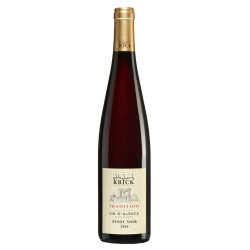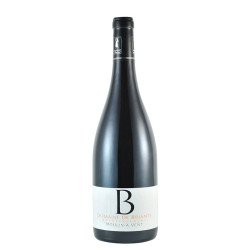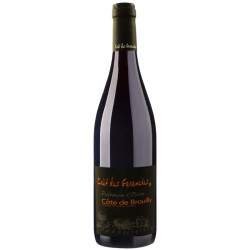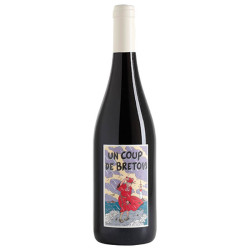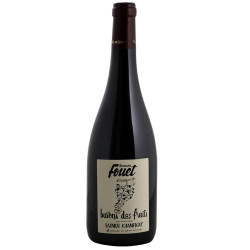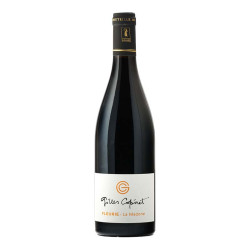Free delivery on purchases of €150 or more per winegrower in France and €250 in Europe (excluding United Kingdom)
Free delivery on purchases of €150 or more per winegrower in France and €250 in Europe (excluding United Kingdom)
-
- Great Offer
-
Our wines
-
-
By colors
-
All the wines
-
-
-
All Regions
-
-
-
-
Our organic & natural wines
-
-
Our Champagnes & Spirits
-
-
All Champagnes
-
-
Spirits
-
All the spirits
-
-
-
Our winemakers
-
-
-
winemakers
-
-
-
Our advice
-
-
Find your wine
-
-
-
- Our commitment !
-
- Great Offer
-
Our wines
-
-
By colors
-
All the wines
-
-
-
All Regions
-
-
-
-
Our organic & natural wines
-
-
Our Champagnes & Spirits
-
-
All Champagnes
-
-
Spirits
-
All the spirits
-
-
-
Our winemakers
-
-
-
winemakers
-
-
-
Our advice
-
-
Find your wine
-
-
-
- Our commitment !
Unbeatable !
WHAT NATURAL FACTORS INFLUENCE WINE ?

How Green and Herbaceous Can a Sauvignon Blanc Be on Certain Terroirs, and How Bright with Citrus and Exotic Fruit Notes on Great Terroirs?
What Are the Natural Factors That Influence Wine?
Have you ever noticed how a Mediterranean wine can "smell like sunshine"? Or how a Sauvignon Blanc can be green and herbaceous on some terroirs, yet bursting with citrus and exotic fruit notes on others? Or even the stark differences between a good and a bad vintage?
Wine is a product deeply connected to the terroir and nature. This prolific relationship shapes wine to reflect its environment: rich, varied, and complex. It's an oenological journey through time and terroirs for those who can identify the influences of natural factors on the taste of our favorite beverage.
If sommeliers spend considerable time learning about different grape varieties, terroirs, and vintages, it's because each grape's characteristics offer radically different bouquets depending on the soil and climate.
The Grape Variety
The first natural element that impacts the taste of wine is the grape variety. The grape variety is simply the type of grapes used. These grapes adapt more or less easily to different terroirs. For instance, Malbec thrives in Argentina but is absent in New Zealand. Grenache is cultivated in Mediterranean climates but not in northern France.
The variety influences the taste due to its tannin content and varietal and evolving aromas. In wine, aromas originate from the berry (specifically the skin and pulp), the vinification process through yeast action, and the aging aromas. Therefore, each grape variety will give a different result!
However, where wine gains its complexity and interest is that the same grape variety can offer a wide range of possibilities across different regions and times, thanks to climate and terroir.
The Climate
Climate is responsible for the "vintage effect." A good vintage is a year where the conditions of sunlight, rainfall, and temperatures are optimal.
Sunlight provides the grape with its sugar content by converting solar rays into sugar through the starch in the vine leaves. If there's too much sunlight, the grape will be overly sweet, resulting in a wine that's high in alcohol and low in acidity. Conversely, if there's too little sunlight, the grape will produce a wine that's acidic and low in alcohol. Ideally, there should be enough sunlight to ensure a good sugar level and structuring acidity.
Rain is necessary for the vine and affects the quantity and quality of grape clusters. If rainfall is too low, the grapes will be smaller and less juicy. On the other hand, excessive rainfall increases the risk of disease and can dilute the juice too much.
Lastly, the warmth from the sun is necessary to prevent winter frost and nourish the grapes in summer. However, excessive heat can scorch the leaves and promote vine diseases. Once again, the ideal condition lies in a balanced climate.
The Soil
The typicity of the soil plays a crucial role as it is essentially the feeding ground for the vine. Like humans, the vine is what it consumes! The acidity, minerality, richness or poverty in organic components, soil depth, and type significantly impact the taste of the wine.
Soil is a composition of earth, rocks, and living (worms, fungi, etc.) or decomposing organisms. Air cavities and water move within these elements. Water interacts with this environment, enriching itself with present minerals to nourish the vine.
There are numerous soil types, each providing a particular profile of nutrition and drainage. The thinner and rockier the soil, the more limited the water and mineral supply to the vine, which is advantageous in a humid climate. Conversely, deeper soils retain more water and minerals, ideal for a drier climate.
This is one reason behind the hillside effect. Vines often thrive on hillsides for a reason! Sun exposure is better, and rainwater runs off to the plains, preventing stagnation.
Many soils are particularly renowned: clay in Bordeaux is known for its coolness, silica for its nutritional contribution, limestone for its filtering properties, etc. There are as many wines and possibilities as there are soils!
Our nuggets
Related articles
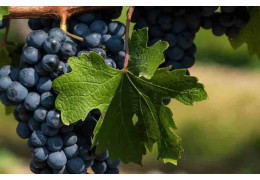
CABERNET SAUVIGNON: ORIGINS AND CHARACTERISTICS OF THIS GRAPE VARIETY
What is the most widely grown grape variety in the world since 2010, and who...

ORGANIC WINE, A GROWING MARKET
Worldwide demand for wine is constantly increasing. However, consumption of ...

SAINT-ÉMILION, WHAT MAKES THIS APPELLATION SO SPECIAL?
The Saint-Émilion appellation is one that resonates in everyone's imaginatio...

BROUILLY, EVERYTHING YOU NEED TO KNOW ABOUT THIS RED RHÔNE WINE
The simple name of the Brouilly appellation hints at its history.
